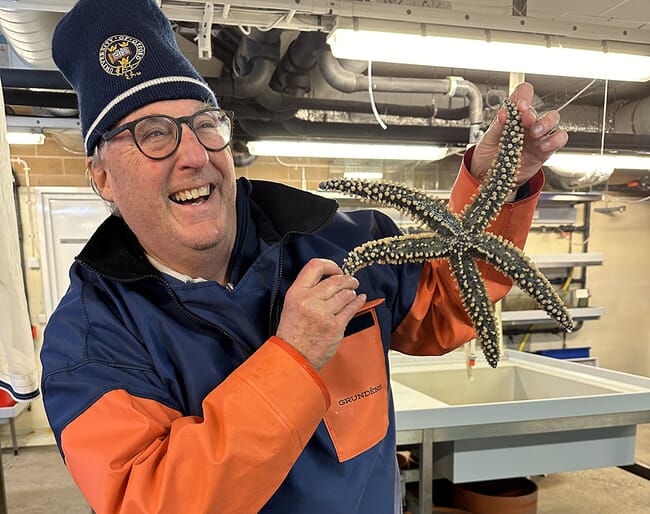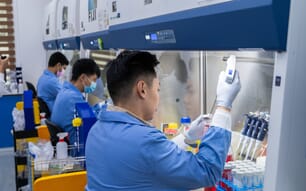
© KTH
Fredrik Gröndahl, director of the Blue Food Seafood Centre and researcher at KTH Royal Institute of Technology in Stockholm, leads several projects utilising machine learning to address key operational challenges in aquaculture. His team’s work aims to boost the European seafood industry’s competitiveness by cutting the high costs associated with manual labour and complex offshore operations.
Gröndahl highlights the unique challenges European farmers face compared to large-scale seafood operations in other regions.
“In China, for instance, seaweed farms can span over 1,000 hectares and rely on intensive manual labour,” he said in a press release. “We could never achieve that scale by hand in Europe, where labour costs are significantly higher. To compete, we need automation and optimised systems.”
AI-driven drones and sensors
Among the ongoing projects at KTH, autonomous underwater vehicles (AUVs), are being developed at the Swedish Maritime Robotics Centre to navigate colder Nordic waters. These drones, equipped with sonar and AI algorithms, autonomously detect the submerged ropes on which seaweed grows, reducing the need for costly vessels and divers. Designed to operate independently of human oversight, the KTH team say these drones could significantly cut labour expenses for farmers.
The research extends to fish farming as well, where blue food researchers are piloting acoustic sensors to optimise feed distribution.
“With underwater microphones, we’re testing a system that listens for the sounds of fish eating,” Gröndahl explains. “When feeding sounds drop off, the system stops releasing feed, minimising waste and ensuring fish receive only what they need.” This AI-driven approach could prevent excess feed from sinking to the bottom of fish pens, which can lead to costly environmental issues.


